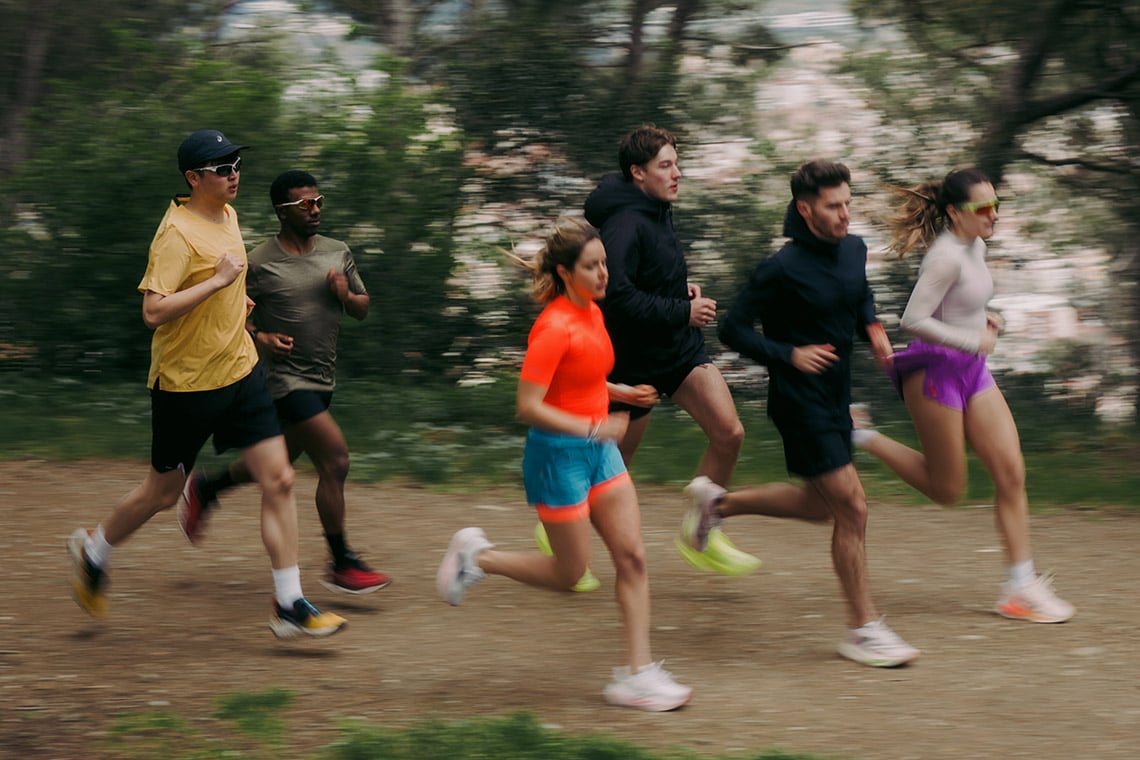Dr. Neil Baxter is a social scientist with a passion for running – not just as a sport, but as a cultural phenomenon. After a five-year research project into British running culture at the University of Warwick, his insights were published in a book on the subject. In a recent talk, he unraveled the complex web of motivations that drive people to run – and how those reasons have changed dramatically over the past century.

From the track to the trail: How running has changed
If you were to picture a runner in the 1950s, chances are you’d imagine a young, white male – perhaps a university athlete, chasing track records with serious intent. Running, back then, was largely the domain of the competitive few. Recreational joggers, when they began appearing in suburban America in the 1960s, were so unfamiliar that some were stopped by police. Society didn’t quite know what to make of people running slowly down the street without the clear goal of a finish line.
Today, that narrow image of the runner has exploded into a kaleidoscope of diversity. We now associate running with people of all backgrounds and body types. We run on city streets, park trails, forest paths. Some chase personal bests, some run for mental clarity, others to raise funds for charity – or simply to feel alive in nature.
Health crises, spiritual highs, and social status: The motivations over time
The initial running boom in 1960s America was largely a response to rising health concerns, especially heart disease linked to sedentary lifestyles. When jogging entered the public consciousness – thanks in part to Nike co-founder Bill Bowerman’s efforts – it promised a way to take back control of one’s well-being. But running didn't just become a solution for physical health; it soon acquired a deeper meaning.
By the 1970s, running had woven itself into the counterculture, with books like The Zen of Running casting it as a spiritual practice. The “runner’s high” was seen not only as a chemical rush but as a transcendent experience – “a flowering of new colours in the soul,” as one writer put it.
At the same time, running was adopted by the rising class of ambitious professionals. It became a symbol of individual discipline, self-reliance, and success – ideals that aligned with emerging neoliberal values. For some, running marked them as part of a new physical elite.
The marathon emerged as the ultimate badge of achievement during the 1980s, with participation skyrocketing – especially among male executives seeking a controlled but intense test of toughness. Women, meanwhile, were still being excluded from many of these spaces: the Olympic women’s marathon wasn’t held until 1984.
That changed in the early 2000s. A new wave of participation – this time led by women – reshaped running yet again. More inclusive events and broader motivations came into play: fun runs, charity races, color dashes, and community events attracted people who were less driven by competition and more by social connection, physical health, and joy.
As marathons became more accessible, some competitive runners shifted toward more extreme formats – like ultramarathons and mountain races. These forms of running, according to Neil’s research, are still disproportionately populated by the same higher-income, male demographic that dominated marathons in earlier decades. Running, even in its most rugged forms, remained a stage for expressing identity, values, and even social class.
So why do you run?
Neil Baxter’s data underscores what many of us feel instinctively: there’s no single reason people run – there are many, often overlapping ones.
Most runners, according to his survey, cited general fitness and emotional well-being as key motivators. Fewer than a quarter said competition was a very important driver. Gender and age also played a role: men were more likely to cite competition and speed, while women prioritized physical and mental health. Interestingly, older runners – especially those over 70 – saw an uptick in social motivations and community connection.
Motivations also shift based on the type of running. Track athletes skew competitive and social, while hill and trail runners are drawn to nature. Joggers (non-competitive runners) emphasize physical appearance, and obstacle course racers often cite charitable fundraising.

The many faces – and reasons – of running
From elite track athletes to casual joggers, from urban commuters to ultrarunners in remote wilderness, running has become a multifaceted activity with room for everyone. Its meaning is no longer confined to podiums or personal records.
As Neil Baxter puts it, “Many ideas, meanings, or forms of significance have been attached to the simple act of putting one foot in front of the other.” Running is now as diverse as the people who do it – and as complex as the lives they lead.
Whether you run to compete, to clear your mind, to feel strong, or to be part of something bigger, your reason is valid. And just like the sport itself, your reason can change – evolve – over time.
Because in the end, we all have our own pace, path, and purpose. Simply put: run your own story.
